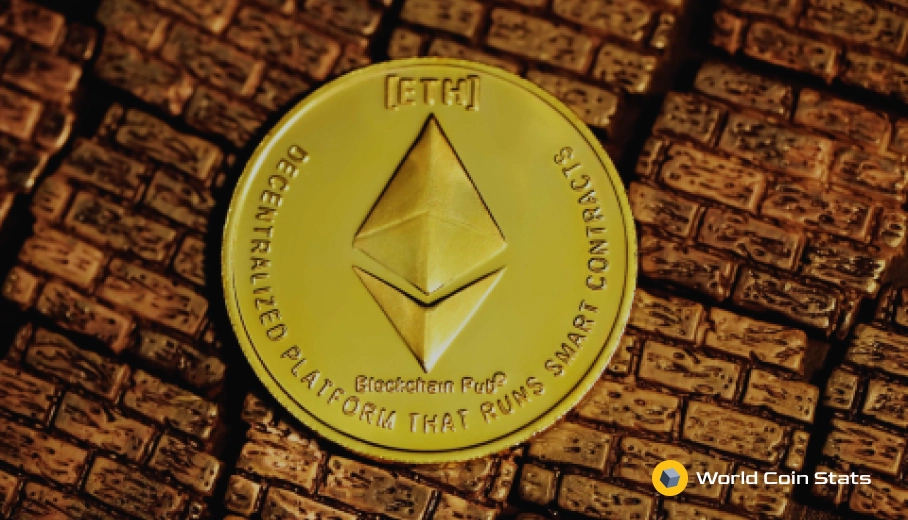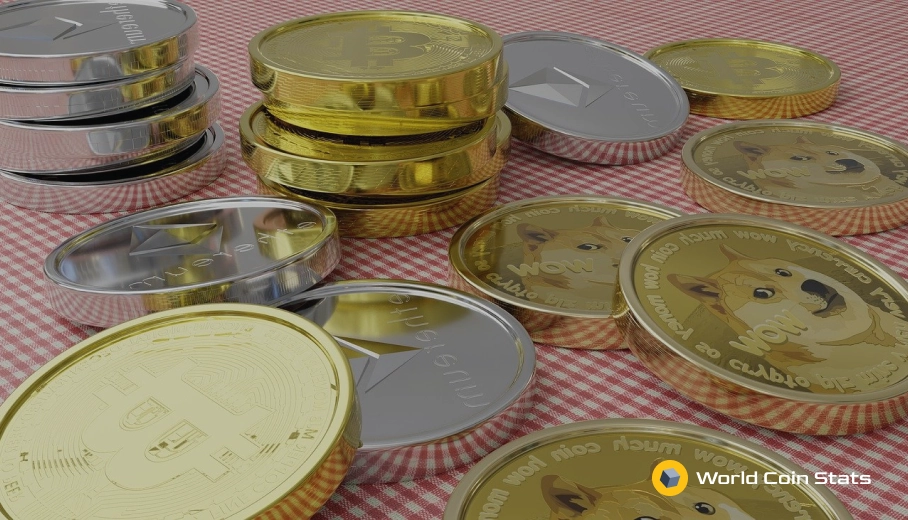Optimism: The Layer 2 Solution
Ethereum has been plagued by a scalability problem since it first became a household name in 2017. Back in 2017 it was simply a game called Crypto Kitties bringing the entire Ethereum blockchain to a near standstill.
Now it is 2021 and Ethereum has actual use as a decentralized finance platform and still has the same scaling problem. This problem has resulted in high transaction times and low transaction speeds. That was a problem with Crypto Kitties, but back then Ethereum was not used for actual financial purposes.
It is used for those purposes in 2021, which has led to developers racing to create a solution for Ethereum to prevent a slowdown of the blockchain. This article will cover one of those intended solutions – Optimism.
The Blockchain Trilemma
Before we cover Optimism, we will first cover the Blockchain Trilemma that has plagued blockchains since the beginning. The trilemma is the following:
- Decentralization.
- Security.
- Linear scaling.
So, what’s the Blockchain Trilemma?
You can only pick two of the above at best. Basically, you can have a decentralized and scalable blockchain that is not very secure (ie. Litecoin). In the case of Ethereum, it is decentralized and secure, but it does not scale linearly.
The lack of linear scaling has led to all the problems with Ethereum.
One last thing to note, smaller layer 1 projects (ie. Cardano) meet all the criteria – decentralization, security, and theoretical linear scaling.
So, what’s the problem?
The linear scaling is only theoretical. It has not been tested in real life.
What Is Optimism For Ethereum?
The full details of Optimism are for beyond the scope of this informative article. We will only cover the barebones basics of Optimism.
With that in mind, Optimism is a layer 2 solution for Ethereum. Specifically, it is a rollup layer 2 scaling solution as opposed to a sidechain or a state transfer.
State transfers only work for the most basic of transactions – they do not work for smart contracts. That is not to say that they are necessarily bad, but most of the congestion on Ethereum is coming from DeFi users interacting with smart contracts.
Sidechains are another decent pick in theory. However, they have centralization problems (remember the Blockchain Trilemma) because there are not all that many validators/nodes on sidechains.
This is where Optimism enters the picture – it’s a rollup layer 2 as mentioned previously.
We know, what is a rollup layer 2 solution? And why is an Optimistic rollup the layer 2 solution?
In simple terms, again, an Optimistic rollup essentially puts results and data together on-chain rather. This is different from Ethereum layer 1 that executes all transactions on the blockchain. The results are then verified for security purposes to prevent fraud. If fraud is detected, then the bond is revoked.
That is a huge upgrade from the current validation system.
Ethereum currently does about 10-30 transactions per second (TPS). Optimistic will be able to do ~450 to well over 2000 TPS.
So, what about the fees with Optimistic rollups?
Those will be less than one cent. And it is decentralized because it still operates on the blockchain itself.
Finally, Optimistic rollups will also be compatible with the Ethereum Virtual Machine (EVM). Again, that is huge because it means that rollups will support smart contracts. As mentioned previously, smart contracts cause most of the congestion on Ethereum.
Protocols That Will Support Optimism
Optimism will have a lot of support from different dApps for precisely one reason.
It is extremely easy to port the code to Optimism. What is the reason for the ease of porting dApps?
Optimism has developed a compiler that compiles the code to make it compatible with Optimism.
Anyway, Uniswap, Compound, and Chainlink have already announced that they will become Optimism compatible. Coinbase has even announced that they will allow users to withdraw Ethereum directly to Optimism (layer 2) rather than the standard method that would involve paying fees to transfer from Ethereum to Optimism.
The Two Problems With Optimism (Layer 2 Solution)
There are actually two problems with Optimism. Neither of the two problems relate to the code, though.
One of the problems is related to the seemingly lack of leadership at Optimism and the other is related to potential problems getting end users to adopt the layer 2 solution.
This section will cover both the problems in detail.
Now, you may have noticed that we keep mentioning ‘will’ when talking about Optimistic. There is a reason for that.
Unfortunately, the reason is not a good reason as we will cover in a later section.
Project Delays
You may have noticed that we keep referring to Optimism in the future tense by using phrasings like ‘when Optimism is released’ and words like ‘will.’
That is because the Optimism mainnet has not yet been released. That in itself is not a big problem – promising projects take a long time to develop and they want to generate publicity beforehand to increase user adoption.
The problem with Optimism is that the project was delayed. Again, delays happen with projects all the time, which is not a huge concern.
The bigger problem is that Optimism announced a public testnet release scheduled for March. In February, that was changed to a mainnet release in March due to hiring more developers.
Of course, March came around and a delay was announced at the last minute.
Now, that is a big problem because delays are known weeks and sometimes even months in advance. Announcing a delay a few days before release is a sign that someone withheld information at some point.
That is a bad sign from the leadership.
The good news is that the public testnet was released in April with the mainnet release planned for July 2021 barring any delays.
Onboarding End Users
The other problem with Optimism, and all layer 2s, is that users still must move onto the layer 2 from layer 1. This means they will have to pay a transaction fee on the layer 1.
We all know that Ethereum has high transaction fees, so that could be a problem for small traders.
Is it really worth paying a $30 transaction fee to move $200 worth of Ether to Optimism?
It is definitely not worth that fee, so this means that getting all the end users on Optimism may prove difficult.
Fortunately, small end users like that do not cause most of the congestion problems. The majority of the congestion problems on Ethereum come from arbitrage bots placing orders, so they will likely make an immediate jump to Optimism to find more profitable trades.
The other good news in regards to this point is that centralized exchanges like Coinbase have announced that they will allow users to transfer directly to Optimism. We mentioned that earlier, but it is a massive positive because it means that end users will not have to interact with the layer 1 when moving from Coinbase to Optimism.
In other words, that means a direct route from Coinbase to DeFi – that is good for DeFi, it is good for Ethereum, and good for cryptocurrency as a whole.
Will Optimism Solve The Ethereum Gas Problem?
Another common concern is that Optimism might not even solve the Ethereum gas problem. First of all, it will most certainly solve the gas problem because, well, the fees on Optimism are negligible. And, as mentioned previously, most of the congestion comes from DeFi.
Optimism will port pretty well with DeFi, so it’s reasonable to assume that the gas problem on Ethereum will mostly disappear if/when most of DeFi moves to Optimism (or another layer for that matter).
Competitors To Optimism
There is a big problem with Ethereum in regards to scaling, which means there are a lot of different projects working to solve it.
Optimism is by no means the only solution. In fact, there are some arguably better solutions out there. But there is one layer 2 solution that immediately springs to mind.
Polygon
The layer 2 solution that has gained the most popularity, by a large margin at that, is Polygon. The technical details are beyond the scope of this article, but it would be considered a sidechain layer 2 solution.
Ths means it does have some centralization problems, but it overcomes that by offering a proof of stake blockchain.
More importantly, it will be compatible with ZK rollups and Optimistic rollups when those are eventually released.
The best part about Polygon, however, is that it has already been released and is actually being used by end users. It also processes over 2.5 million transactions per day, so it does have some verification that it actually works as intended.
Of course, most of those transactions have come about because Polygon has picked up partnerships with Aave, Sushi, Curve, and a few other dApps.
Polygon is a layer 2 that you should keep your eye on – it could actually compete with Optimism because it does have an Ethereum layer 2 solution (it is on Ethereum afterall), but it does much more than that as well.
Closing Thoughts
That sums it up for why Optimism has the potential to become the layer 2 scaling solution that will solve the problematic Ethereum scaling problem. Granted it does have a few obstacles to overcome in the way of end user adoption and seemingly poor leadership. But the compiler that Optimism has released should make the process of parting dApps to the layer 2 extremely simple.




